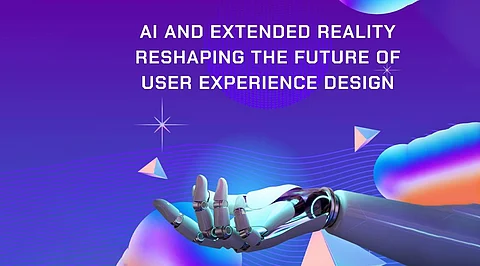

In this modern era, digital interactions are undergoing a profound transformation through emerging technologies and innovative design approaches. Karthikeyan Dhanasekaran, an expert in user experience design at a leading financial technology firm, explores how artificial intelligence, extended reality, and inclusive design principles are revolutionizing the way users interact with digital products, shaping a future where technology adapts to human needs rather than the other way around. This transformation is particularly evident in sectors ranging from healthcare to education, where personalized digital experiences are becoming increasingly essential for user engagement and satisfaction.
Highly personalized experiences through artificial intelligence are changing the face of UX design. Digital platforms are constantly adapting in real-time to user behaviours, acting as nigh seamless interactions. Using large amounts of user data, AI systems optimize designs to increase engagement metrics and customer satisfaction. The first thing they do is predict user needs (by finding out what they like and what they’re looking for), so then they adjust the navigation paths, the content to go into, and also the visual design that they’re looking for, so that when people open their web sites or their apps, they’re like, oh, that’s easy to use, and the UI is intuitive, and I like it. Personalizing these things raises engagement, decreases the friction of the interface, and increases digital experiences.
Natural User Interfaces (NUIs) are evolving in accessibility. These systems became accessible to different users via the integration of voice commands, gestures and touch interfaces. The combination of many forms of interfaces, including various methods to create more intuitive experiences, which accept two or more speech patterns, abilities, and cultural preferences.
Inclusive design principles into modern UX design, even to the age, ability and cultural context. This approach means that digital interfaces can never be used by people with diverse needs or preferences without being inherently usable. The innovations are multilingual support, context-sensitive interaction, and cognitive load optimization, making technology usable by everyone. Age-specific adaptations and perceptual accessibility features make the technology effective for use by those across all life stages. The integration of universal design principles has served as the blueprint for how interfaces address the difference in ability of users, from adjustable text sizes, and contrast settings to accommodating users with varying levels of digital literacy and physical ability through customizable interaction methods.
Extended Reality (XR) technologies, encompassing virtual reality, augmented reality, and mixed reality, are opening new possibilities for user interaction. These technologies provide immersive, interactive experiences that go beyond traditional 2D interfaces, allowing users to engage with digital content in more natural and intuitive ways. In AR applications, contextual overlays enhance real-world environments with additional digital information, while VR offers completely immersive environments for activities like training and education.
The evolution of UX design has brought ethical considerations to the forefront. Modern design practices emphasize user privacy protection and digital well-being, incorporating features like transparent data usage notifications, clear opt-in/opt-out mechanisms, and tools for managing screen time and digital fatigue. These considerations have become crucial as digital interactions become more prevalent in daily life, with designers working to create experiences that balance engagement with user well-being.
The field demands new competencies from UX professionals, including expertise in psychological need assessment, emotional design proficiency, and experience evaluation. This evolution requires continuous professional development and a deep understanding of human behaviour and needs. The focus has shifted toward creating meaningful experiences that resonate with users on both practical and emotional levels. As the industry evolves, professionals must develop skills in analyzing user psychology, understanding emotional triggers, and creating interfaces that not only function efficiently but also provide engaging and satisfying experiences that address deeper user needs and motivations.
A modern UX design can be implemented only if technical capabilities are balanced with human needs. It covers the task of ensuring continuity of experience among platforms, managing emotional response processing and integrating hedonic quality implementation so that pragmatic functionality is maintained. A design decision must be technically feasible while also not impacting humans.
A diverse set of frameworks measures the efficacy of modern UX deployments based on user satisfaction metrics, accessibility improvement, and efficiency metrics. The measurements provide organizations with increased confidence in their design approaches and ability to continually improve the user experience. Being successful is being measured increasingly by the positive impact on a user’s life and work, not just technical performance.
In conclusion, Karthikeyan Dhanasekaran's research reveals that successful UX design requires a delicate balance between technological innovation and human-centred principles. The integration of AI, extended reality, and inclusive design practices is creating more engaging, accessible, and ethically conscious digital experiences, setting new standards for the future of user interaction. As technology continues to evolve, the focus remains firmly on creating experiences that enhance human capabilities while respecting individual needs and preferences.
